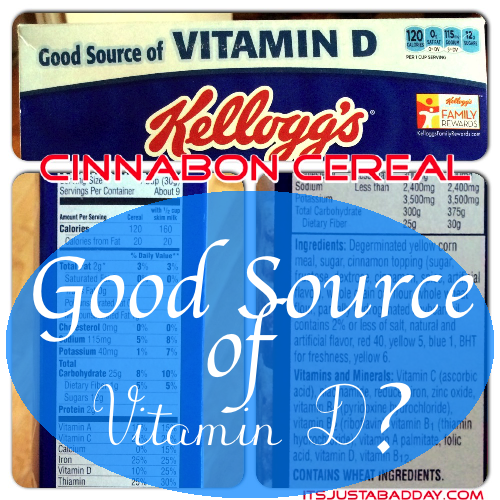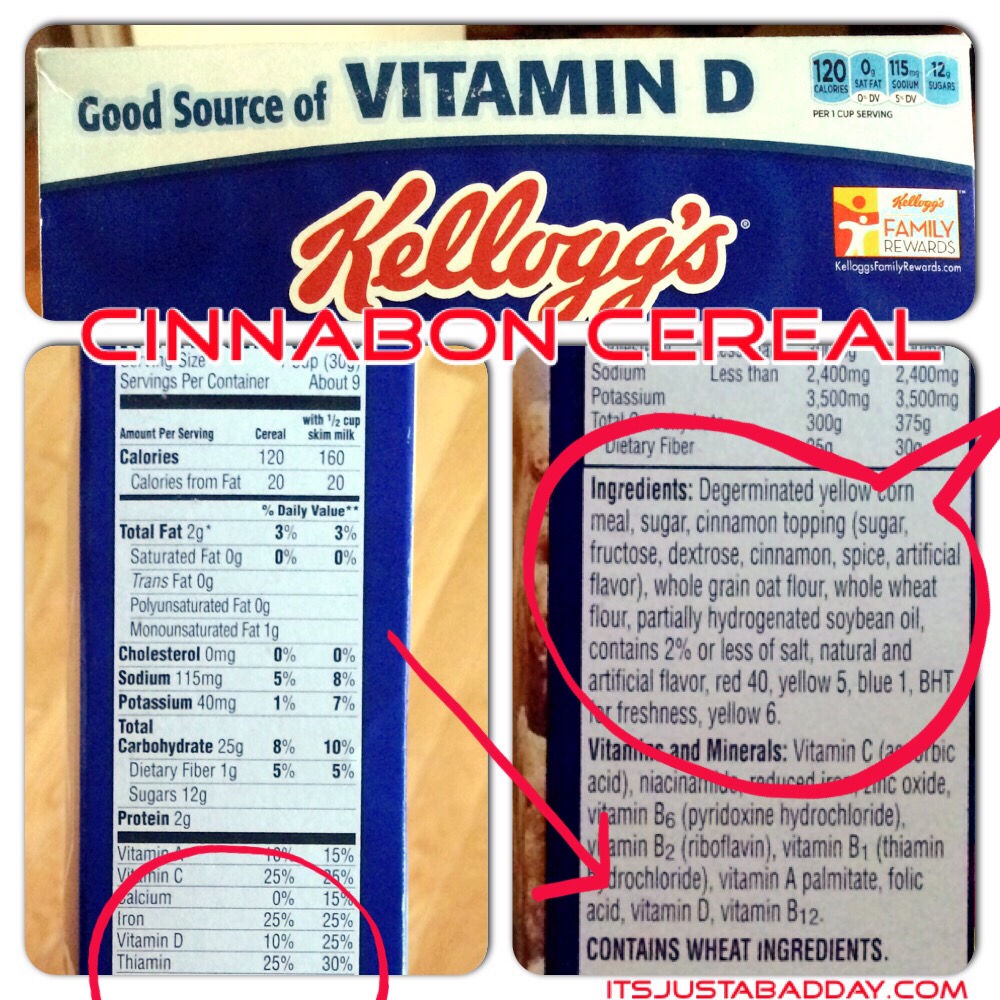I was sitting in my kitchen watching my brother chow down on Kellogg’s Cinnabon cereal and I started questioning the “Good source of vitamin D” claim the box was making.
Did you know that if you live in the USA and live above Georgia, you’re more than likely Vitamin D deficient. It’s estimated something like ¾ of the US population is lacking this sunshine vitamin! Knowing this statistic, I was interested if this cereal really was a good option for increasing vitamin D consumption.
There aren’t many naturally occurring foods which contain vitamin d so I knew that this ‘vitamin d’ definitely was an added ingredient in this “food”.
According to the NIH,
“Very few foods in nature contain vitamin D. The flesh of fatty fish (such as salmon, tuna, and mackerel) and fish liver oils are among the best sources [1,11]. Small amounts of vitamin D are found in beef liver, cheese, and egg yolks. Vitamin D in these foods is primarily in the form of vitamin D3and its metabolite 25(OH)D3 [12]. Some mushrooms provide vitamin D2 in variable amounts [13,14]. Mushrooms with enhanced levels of vitamin D2 from being exposed to ultraviolet light under controlled conditions are also available.
Fortified foods provide most of the vitamin D in the American diet [1,14]. For example, almost all of the U.S. milk supply is voluntarily fortified with 100 IU/cup [1]. (In Canada, milk is fortified by law with 35–40 IU/100 mL, as is margarine at ≥530 IU/100 g.) In the 1930s, a milk fortification program was implemented in the United States to combat rickets, then a major public health problem [1]. Other dairy products made from milk, such as cheese and ice cream, are generally not fortified. Ready-to-eat breakfast cereals often contain added vitamin D, as do some brands of orange juice, yogurt, margarine and other food products.
Both the United States and Canada mandate the fortification of infant formula with vitamin D: 40–100 IU/100 kcal in the United States and 40–80 IU/100 kcal in Canada [1].”
Dr. Mercola is a doctor who I really, really respect and value his research and information. According to an article posted on his site,
“Vitamin D has major health benefits. The best source of vitamin D is from the sun, but you also see many foods fortified with Vitamin D. Unfortunately, milk and other foods fortified with vitamin D often contain a synthetic form called ergocalciferol, or vitamin D2.
This synthetic form isn’t as potent and doesn’t last as long in your body. In fact, synthetic vitamin D becomes toxic in your body at far lower levels. Too much synthetic vitamin D2 may be linked to health problems. A number of studies link synthetic vitamin D2 to irritation of the lining of blood vessels.” You can read more and watch a video here!
So Kellogg’s, let’s decode this cereal box.
First off, the ingredients list isn’t the greatest.
Ingredients: Degerminated yellow corn meal, sugar, cinnamon topping (sugar, fructose, dextrose, cinnamon, spice, artificial flavor), whole grain oat flour, whole wheat flour, partially hydrogenated soybean oil, contains 2% or less of salt, natural and artificial flavor, red 40, yellow 5, blue 1, BHT for freshness, yellow 6.
When I read this I thought GMO, GMO, GMO, maybe GMO, maybe GMO, GMO, maybe GMO, GMO and lots of excitotoxins.
So my thoughts on this cereal are…
MAYBE you’re getting vitamin D from this cereal, but is it worth getting it from something that’s literally made from almost all genetically modified ingredients?
I’m gonna go with a big fat NO on this one. Let’s try this – get your butt outside and try to soak up some sun. Even a few minutes each day can help! And that’s the BEST way to get your vitamin D… not from a ‘fortified’ cereal.
Wishing You A Pain Free Day!



I can always tell when I don’t get enough sun, but I’m lucky enough to live in one of the areas that gets enough sunlight. I don’t really have to worry about Vitamin D unless I’m stuck indoors for too long!